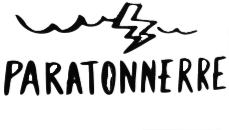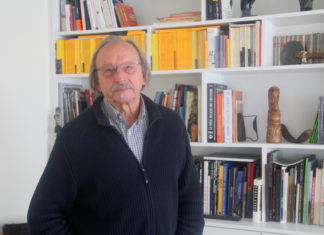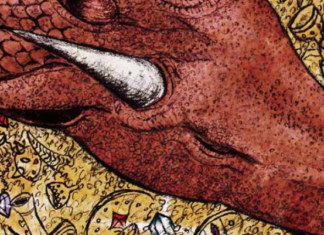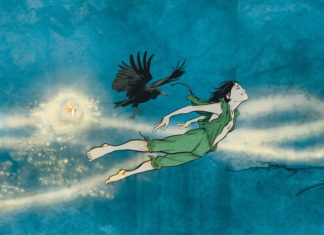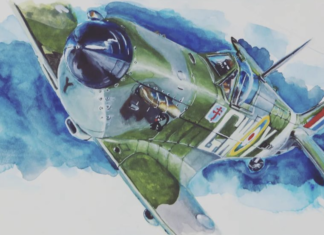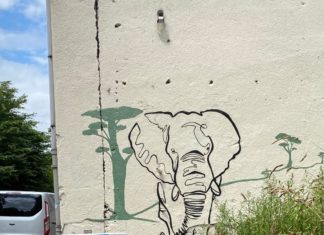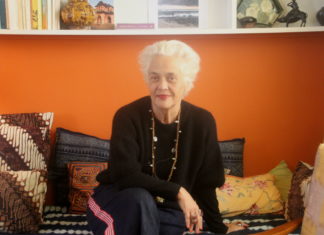Le Congo proclame son indépendance de la Belgique en 1960 notamment par les actions de Patrice Lumumba soutenu par l’Union Soviétique. Le siège de Jadotville eut lieu en septembre 1961 durant l’intervention des casques bleus dans la province du Katanga. Un petit groupe de soldats irlandais engagé dans une mission de routine fut pris sous le feu d’un groupe bien plus puissant avec notamment des mercenaires européens.
Declan Power, ancien soldat irlandais, analyste dans la Défense et auteur du livre « The siege of Jadotville » (adapté au cinéma par Netflix cette année) répond à nos questions.
– Pourquoi l’ONU a choisi les casques bleus irlandais pour arrêter la sécession de la Province du Katanga au Congo?
L’ONU n’a pas seulement choisi les Irlandais pour une telle mission. Ils étaient une partie du contingent avec entre autres d’autres troupes indiennes et suédoises.
La mission initiale de l’ONU était restaurer l’ordre et la stabilité dans tout le Congo frappé par des luttes entre tribus et ethnies.
Et comme il y avait le contexte de la Guerre froide, les pays impliqués ne devaient avoir aucun lien avec le Congo.
– Que représentait le Katanga?
La région du Katanga était la plus riche du pays, principal foyer de minéraux grâce à son industrie minière. Le Katanga fournissait 70 à 80% des richesses du Congo.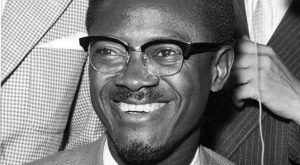 Par conséquent, la menace du nouveau Premier ministre congolais, Patrice Lumumba de nationaliser les mines à provoquer une tentative de sécession avec le reste du pays. La déclaration d’indépendance du Katanga ne fut pas reconnue comme légale par l’ONU. Selon certains, le nouveau gouvernement katangais avait été crée pour protéger les intérêts miniers d’occidentaux. Toutefois, si l’état du Katanga avait survécu en tant qu’entité, il aurait pu avoir un effet stabilisateur sur l’ensemble de la région du Congo.
Par conséquent, la menace du nouveau Premier ministre congolais, Patrice Lumumba de nationaliser les mines à provoquer une tentative de sécession avec le reste du pays. La déclaration d’indépendance du Katanga ne fut pas reconnue comme légale par l’ONU. Selon certains, le nouveau gouvernement katangais avait été crée pour protéger les intérêts miniers d’occidentaux. Toutefois, si l’état du Katanga avait survécu en tant qu’entité, il aurait pu avoir un effet stabilisateur sur l’ensemble de la région du Congo.
– Qui étaient les mercenaires occidentaux pro-Katanga?
Les mercenaires étaient pour la plupart d’anciens soldats et officiers parachutistes belges, d’anciens policiers coloniaux, d’anciens légionnaires français qui avaient été impliqués dans la tentative de coup d’état contre Charles de Gaulle l’année précédente. Il y avait également des mercenaires sud-Africains et rhodésiens. Comme meneurs, on pouvait trouver Roger Trinquier, spécialiste français de la contre-insurrection, Roger Falques, un ancien officier de la Légion étrangère et Bob Denard. Le chef mercenaire à Jadotville s’appelait Michel de Clary, un ancien des commandos de marine.
– Etait-il possible de prédire le siège de Jadotville?
Le siège de Jadotville a suivi après les tensions diplomatiques durant les réunions de l’ONU à New York et au déploiement de soldats afin de protéger les colons belges face au risque de massacres pouvant être perpétrés par la tribu Baluba 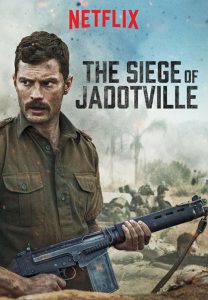 notamment. Cependant, tout cela est à présent vu comme une manipulation afin de pousser l’ONU à envoyer ses troupes dans les régions où elles n’étaient pas les bienvenues. Les soldats de la paix tombaient en embuscade et servaient d’otages ou d’outils de propagande.
notamment. Cependant, tout cela est à présent vu comme une manipulation afin de pousser l’ONU à envoyer ses troupes dans les régions où elles n’étaient pas les bienvenues. Les soldats de la paix tombaient en embuscade et servaient d’otages ou d’outils de propagande.
Avant que la compagnie A stationne à Jadotville, une autre force composée de soldats irlandais et suédois avait été présente. Les troupes étaient deux fois plus nombreuses et mieux armées cependant le commandant sur les lieux, le Major suédois Mide, avait prévenu que la population que les soldats devaient protéger leur étaient hostiles.
– Quel était le rôle du gouvernement français dans cette crise et dans le siège de Jadotville?
Il semble que la France avec la Belgique a officieusement aidé à financer et fournir une gendarmerie pour l’Etat du Katanga. Les intérêts économiques français dans la région étaient très importants et la constitution d’un gouvernement favorable à la politique africaine des Français était aussi un atout majeur.
– Quelle est l’opinion des Irlandais concernant l’action de leurs soldats durant l’opération au Congo?
Les événements à Jadotville avaient été très suivis par la population irlandaise mais peu à peu cela a été oublié dans le temps. Depuis la publication du livre « Siege at Jadotville » il y a quelques années et la sortie récente du film, beaucoup d’Irlandais s’y sont replongés et ont reconnu l’action de leurs soldats. C’est perçu comme une honte qu’il y ait pu avoir un tel oubli.
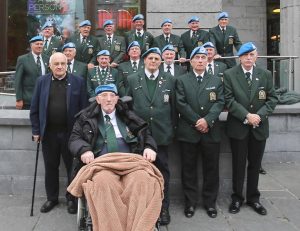
Jadotville- Congo: An Irish story
The Congo became independent of Belgium in 1960, led initially by a firebrand nationalist, Patrice Lumumba, backed by the USSR. The Siege of Jadotville took place in September 1961, during the United Nations intervention in the Katanga Conflict. a small group of Irish soldiers went on a routine mission but soon found themselves under attack by a much more powerful force including European mercenaries. Interview with Declan Power, a former Irish Army soldier, defence analyst and author of ‘the siege of Jadotville’ (adapted for film by Netflix this year).
– Why did the UN choose specifically Irish troops to stop the secession of the Katanga province from the Congo?
The UN didn’t choose the Irish exclusively. They were part of the ONUC contingent that included Indian and Swedish troops, among others. The original ONUC mission was to restore order and stability throughout the Congo, as it was imploding to due to inter-tribal and ethnic strife. As it was the height of the Cold War, the countries chosen to participate were ones that had not strategic connection to the Congo.
– How really was the state of Katanga?
The state of Katanga was the most wealthy one in the Congo. It was the main generator of Congo’s mineral wealth through its mining industry and as such was responsible for 70-80% of the Congo’s wealth. Therefore when it attempted to secede from the Congo in 1961 after a threat by Congolese prime minister, Patrice Lumumba to nationalise the mines there, the declaration of independence was not recognised as legal by the UN. Depending on who you read, some say the new native-led govt of Katanga was funded by the western mining interests to protect their businesses. However, had it survived as an entity it might have provided a stabilizing effect on the Congo region as a whole.
a threat by Congolese prime minister, Patrice Lumumba to nationalise the mines there, the declaration of independence was not recognised as legal by the UN. Depending on who you read, some say the new native-led govt of Katanga was funded by the western mining interests to protect their businesses. However, had it survived as an entity it might have provided a stabilizing effect on the Congo region as a whole.
– Who were the European pro-Katanga mercenaries? – Could you predict any tensions such as the siege of Jadotville?
The mercenaries were mostly composed of former Belgian para-commando officers and NCOs, some former Belgian colonial police officers, former French Foreign Legion officers and NCOs that had been mixed up in an attempted coup against Charles de Gaulle the previous year. There were also some South African and Rhodesian mercenaries involved as well. Some of the leading mercenary leaders included Roger Trinquier, a French counter insurgency specialist, Roger Falques, a former French Foreign Legion officer and Bob Denard a former French marine-commando. The mercenary leader at Jadotville was Michel de Clary, another former French officer.
– What was the real part of the French government in this crisis & in the siege of Jadotville?
The siege at Jadotville arose following pressure put on the UN in New York at a diplo matic level and also in the Congo at a local level to deploy troops to protect the white Belgian settlers from massacre by tribe such as the Baluba. However, this has been largely now seen as manipulation to force the UN to deploy troops in regions where they were not welcome and fall into traps where they could be captured and used as hostages or propaganda tools. Before A Company deployed to Jadotville there was a mixed Irish/Swedish force in place that was better armed and double the size of A Company, yet they were withdrawn when th
matic level and also in the Congo at a local level to deploy troops to protect the white Belgian settlers from massacre by tribe such as the Baluba. However, this has been largely now seen as manipulation to force the UN to deploy troops in regions where they were not welcome and fall into traps where they could be captured and used as hostages or propaganda tools. Before A Company deployed to Jadotville there was a mixed Irish/Swedish force in place that was better armed and double the size of A Company, yet they were withdrawn when th
eir commanding officer, Major Mide, a Swedish officer, pointed out that the people they were sent to protect were actually hostile the UN 5. It appears that the French govt had a covert role in assisting with the funding and sourcing of manpower for the Katangan gendarmerie, along with the Belgian govt. The reason for this can be largely put down to protection of French economic interests in the region and also the establishment of a regime that would be compliant with French geo-political strategy in that part of Africa.
-What are the thoughts of the Irish people concerning the UN Congo intervention?
The Irish people initially were very interested in the outcome of events at Jadotville. But later
they men’s experiences were forgotten about. Since the publication of the book ‘Siege at Jadotville’ some years ago and now the subsequent film, most Irish people are very sympathetic to the plight of the Irish soldiers who fought there and consider it a disgrace that the issue was covered up and that they were forgotten about.
 http://www.goodreads.com/book/show/32198764-siege-at-jadotville
http://www.goodreads.com/book/show/32198764-siege-at-jadotville
